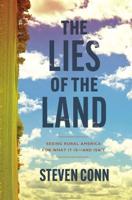Publisher's Synopsis
This book provides an analysis of children's play across many different cultural communities around the globe. Each chapter discusses children's play as an activity important for formal and informal education, mental health and childhood well-being, and children's hobbies and past-times. Traditional, modern and postmodern play forms are discussed and probed for their meaning within a contemporary global community. Authors address the functions that this phenomenon serves for indigenous cultures and the problems that arise due to the globalization of educational and social resources.
Issues that are covered include the importance of conceptualizing the relationship between play and culture, how play varies both within and between cultures, children's non-play activities in relation to play activities, how play is learned and how adults, parents and teachers, as well as older peers and siblings, are all important influences on the play of children. Questions that are raised include: Is it fair to emphasize the importance of certain kinds of play, such as social pretense play? Is this ethnocentric? Is the mastery of certain forms of play (e.g. socio-dramatic play) during the early years critical in the acculturation process? How are different cultures incorporating literacy props in play, or otherwise developing early educational programmes that use play educationally to foster literacy acquisition? These and many other questions or issues are taken up in this volume.
At the heart of the book is a focus on human rights, in particular the Child's Right to Play as stated in the UN Convention on the Rights of the Child. The book is committed to the principle of all children reaching their full potential and the enhancement of their families, communities, and cultures through play.










